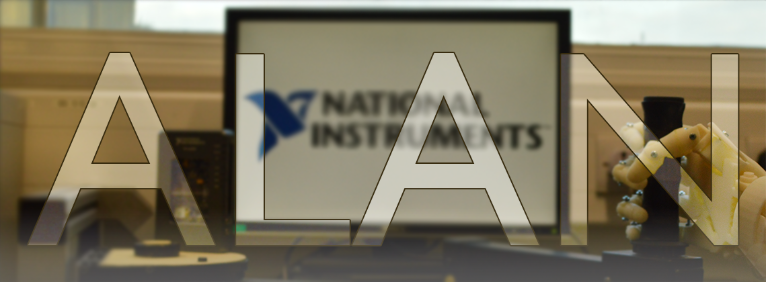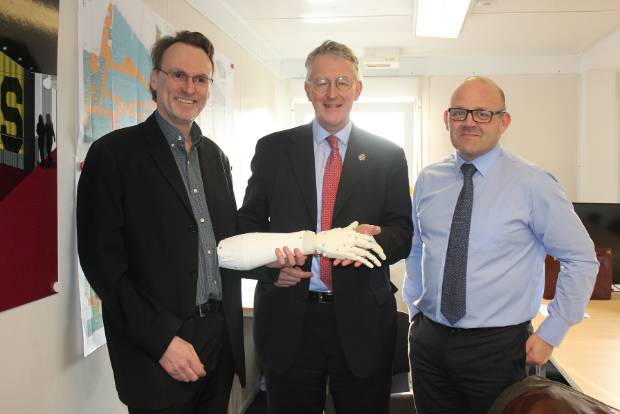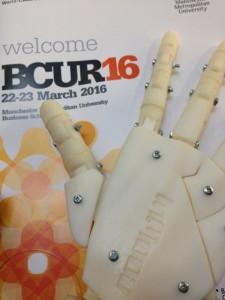https://3dprint.com/130724/project-alan-arm-stroke-rehab/
by
Among the population of the United Kingdom, the stroke is the second highest cause of death, and is also the leading cause of chronic adult disability. For those who survive the unfortunate attack on the brain, about 85% must deal with some degree of arm paresis immediately afterwards, while 25% of those patients will still have difficulty using their arm after five years. In order to try and alleviate this critical issue, the UK National Health Service (NHS) provides physiotherapy to these afflicted patients, attempting to help them regain their lost motor functions.

Unfortunately, the NHS has relatively limited resources for post-stroke rehabilitation, which could potentially limit the degree to which the patient is able to recover. One team of student researchers, hailing from the UK-based University of Leeds, are looking to improve the current state of physiotherapy for these post-stroke patients. Their work, which they’ve named Project ALAN (Advanced upper-Limb Autonomous Neuro-rehabilitation), is comprised of two core components, which the team hopes will help lead to wider and more affordable access to post-stroke rehabilitation methods.

Martin Levesley and Dr. Andrew Jackson present the ALAN arm to Hilary Benn at the New UTC Leeds Construction Site
“It will act as a robotic testing solution for the myPAM device and lay foundation for remote physiotherapy possibilities in the future,” wrote team ALAN member Arturs Grigals. “This in turn will accelerate the commercialization process and enable the rehabilitation device to reach wider audiences delivering its unprecedented physiotherapy methods.”This isn’t the first time that 3D printing technology has been utilized to help post-stroke patients with rehabilitation. For instance, last year, a group of Lehigh University students created the 3D printed Aquahand, an assistive device engineered to help stroke victims regain their hand functioning. But, what makes Project ALAN especially unique is that the 3D printed robotic hand is being used as a testing solution, rather than an end-all solution.

Project ALAN showcased the progress of their work at the annual Leeds Festival of Science, which took place at the University of Leeds on March 19. At the event, team ALAN exhibited two separate robotic arms for their testing rehabilitation devices. The project was also featured at the British Conference of Undergraduate Research on March 23, where an oral presentation and discussion were held on the progress and future of their work.
Team ALAN is a multidisciplinary team comprised of a number of University of Leeds students, including Arturs Grigals, Mazvydas Mark Narvidas, Maksims Kuznecovs, Jack Brookes, Simon North, Jake Smith, Rosie Smith, Declan Toyne, Alistair Malhotra, Chris Pritchard, Menelaos Kanakis, and Stephen Worsley. The project itself is being supervised by University of Leeds engineering professors Martin Levesley and Dr. Andrew Jackson, as well as project supervisor Dan Trowsdale and industrial mentor Dr. Justin Gallagher. Though Project ALAN may have a bit more testing and prototyping ahead of itself, the team seems close to alleviating this wide-spread chronic adult disability dilemma. How helpful do you think this new technology will be? Discuss in the 3D Printed ALAN Arm forum over at 3DPB.com.
No comments:
Post a Comment